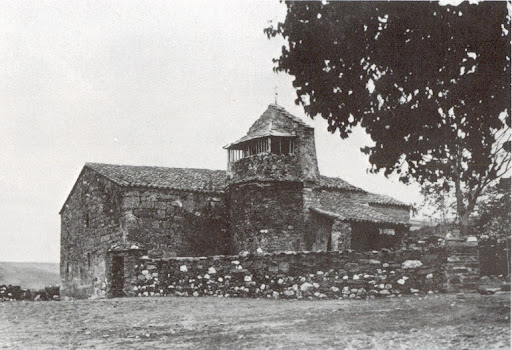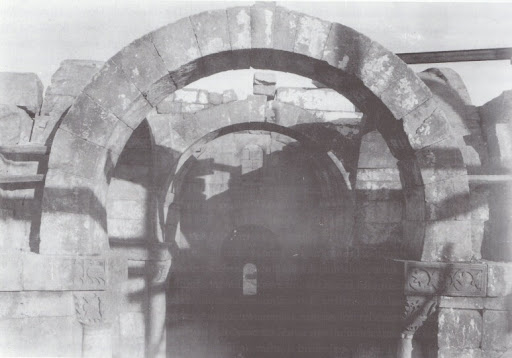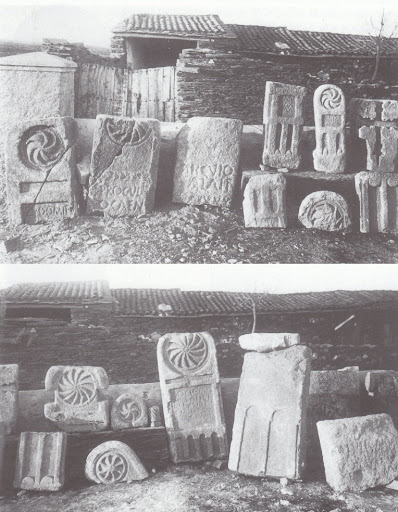Monday, October 25, 2010
Pokemon Friendship Bracelets Directions

San Pedro de la Nave - - - - Abu Simbel
San Pedro de la Nave is a small church located in the municipality of El Campillo (about 22km. City Zamora ) and like the arch-known Egyptian temple of Abu Simbel , had to be dismantled stone by stone and back to rebuilt to prevent the water from a reservoir did disappear.
guess many of you are thinking:
- What is the Iñaki exaggerated this! Look to compare the majestic colossal Egyptian monument with a small parish lost in the fields of hard to Zamora ... This has been three people.
Well go to parties. I agree that in terms of grandeur and antiquity, the temple of Abu Simbel wins by a landslide. But if you look at the humble and rustic beauty of the stone church, its beautiful decoration, the curious findings that were carried out and its historical and artistic importance ... We found that San Pedro de la Nave is a great little monument totally unique.
The church was built between 680-711 , ie on the eve of the Arab invasion and in full command Visigoth and the main feature of San Pedro de la Nave is that it is one of the few buildings Visigothic that escaped the first Islamic destruction and subsequent reconstruction in other styles then being so very Visigoths few remnants remain.
Moreover, throughout the Iberian Peninsula only San Juan de Baños (Palencia) there is another building that is comparable, although the interior decoration of the church Zamora is unique for its beauty and characteristics.


The reason why it has survived to this day is due to the area that is poor and deserted, enabling it to go unnoticed.
But this neglect that was his salvation, was also about to be his undoing. He was a historian and archaeologist named Manuel Gomez Moreno who realized that the old church was more than a pile of stones that were still standing miracle.

location and appearance of San Pedro de la Nave (1912). He added, alterations and construction defects that were suppressed in their removal.
Their research left no doubt that this was an exceptional building and was Visigothic art and hard work that got the church to be registered and recognized in 1912 as a national historic-artistic monument.

Annotations walk Moreno Gomez field in which he describes some inscriptions and pieces found.
But that did not end the problems of the small temple. Esla river downstream, on whose banks stood the church, he began building the dam Ricobayo and impoundment of underground water would leave the church.

picture in 1930 construction of the dam Ricobayo.
again the tenacity and stubbornness Gomez Moreno, aware of the importance of the building, manages to launch the project to dismantle the church and taken to safety.
In October 1930, 80 years ago and 30 years ahead of Abu Simbel, work began to move. The photos below show different stages of their removal.






and continued moving stone by stone to just leave a lot.

Naturally, the move also moved the "furniture and furnishings" of the church, Christ as the fourteenth century and a carving of St. Benedict XVIII waiting their turn to leave.

While clearing also produced some exceptional discoveries, as a considerable number of Roman tombstones that were reused for the construction of the cornerstones of the church. This finding confirmed a fact that time already had some confidence, the existence of Roman sites in the vicinity.

Currently, these trails are in the Provincial Museum of Zamora.
Another of the surprises in store for the church was found with a horology, a kind of sundial also marked the date of year, recorded in one of the pillars of the temple. But for some unknown reason their production was interrupted and is incomplete, cuts in March.

But perhaps one of the most important discoveries made by Gomez Moreno (although he would not know) was to find a wooden beam embedded in the wall and through of some staples, also of wood, holding a bow.

The wooden beam is kept at the Provincial Museum of Zamora and where there are holes where the nails were embedded.
However, it appeared later that one of these clips had been made from the outermost part of the trunk, so that the testing of carbon-14 on the rings of this clip (it is understood that were the past that had formed before cutting the tree) could put the date of logging in the years 648-695, which would help quite accurately locate the construction of the church.
The result of the work of Gomez Moreno certainly could not be more satisfying and I hope I have convinced that there are so many things that separate this charming and welcoming church, the stunning Abu Simbel ... Bridging the gap, of course.
can visit the church and its schedule of visits can not be more flexible. Any day of the week Christian hours (three in the morning, for example, Christian is not an hour), just have to ask the neighbor who holds the key and accompany them kindly. Each year is a different inhabitant of the people in charge of guarding the keys and are always happy to show visitors the church.
Dedicated to my father, Zamora-blooded.
More:
Church of San Pedro de la Nave. (Wiki)
Church of San Pedro de la Nave. (Many photos and descriptions)
History of San Pedro de la Nave. (page of El Campillo)
Visigothic Art. (Arquivoltas.com)
transfer Photographs taken from the book:
The Church of San Pedro of the Nave. ( Studies Institute Florian de Ocampo Zamorano )
0 comments:
Post a Comment